With an AK-47 slung on her shoulder, Khaleda Begum came running towards them with an intimidating expression.
Amardeep Singh gently explained what they had set out to do.
Her face softened. She assigned her 17-year-old grandson to take her AK-47 and protect the team.
She seemed to embody Guru Nanak's message: Eiko dharam dhrirey sach koi (Righteousness is the only truthful universal law).
Payal Singh Mohanka speaks to Amardeep Singh who has followed Guru Nanak's visits across nine countries.
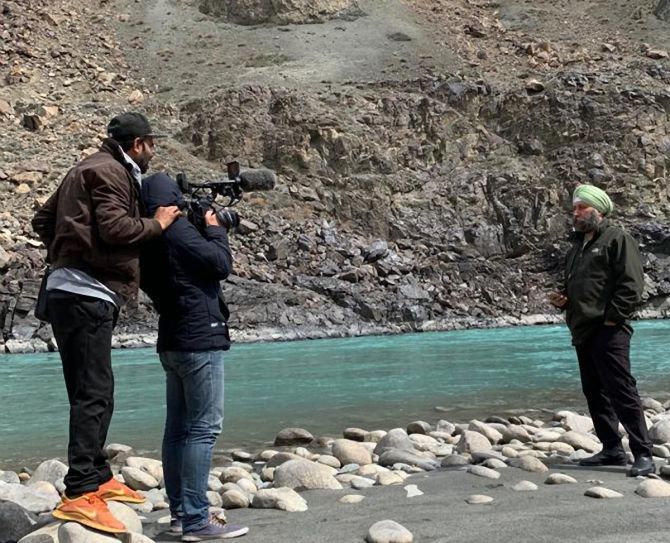
When it's a passionate pursuit, a true labour of love, not only does the universe conspire to make it happen but the Creator himself guides you towards euphoric fulfilment.
As I listen to Singapore-based Amardeep Singh talk about the treacherous terrain he navigated to realise his ambitious project, a 24-episode docu-series on the path travelled 552 years ago by Guru Nanak, founder of the Sikh faith, I am reminded of the soul-stirring lines of this shabad, a hymn from the Guru Granth Sahib, the holy book of the Sikhs:
Santaa kay kaaraj aap khalo-i-aa har kamm karaavan aa-i-aa raam. (The Lord Himself has stood up to resolve the affairs of the devoted. He has come to complete their tasks.)
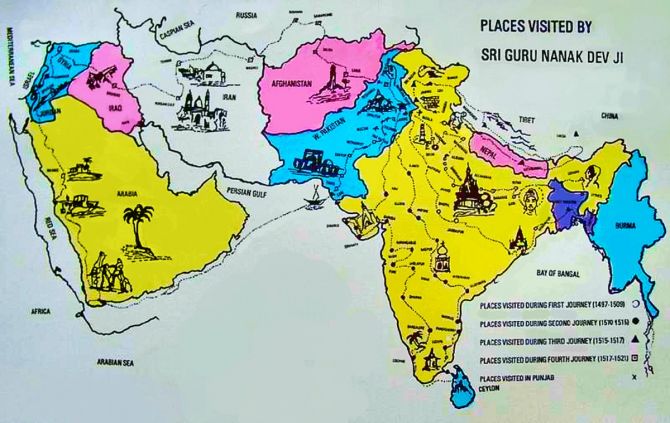
Guru Nanak visited 150 multi-faith sites spread over nine countries over 22 years.
The docu-series -- titled Allegory: A tapestry of Guru Nanak's Travels -- retraces his steps in India, Pakistan, Afghanistan, Iran, Iraq, Saudi Arabia, Bangladesh, Sri Lanka and Tibet.
The mission was to capture the essence of his teachings -- universal brotherhood, equality, empowerment of women and selfless service.
Born into a Sikh family that migrated from Pakistan and settled in Gorakhpur, Uttar Pradesh, 55-year-old Singh is the youngest of six siblings.
He went to Doon School where his love for the mountains, travel and trekking was nurtured. But his interests in the history of the Indus region and the origins of Sikhism were ignited as a teenager.
At the age of 19, he lost his father and went through a period of acute struggle; he found himself grappling with unanswered questions and a need to understand his own faith. He also studied musicology and photography.
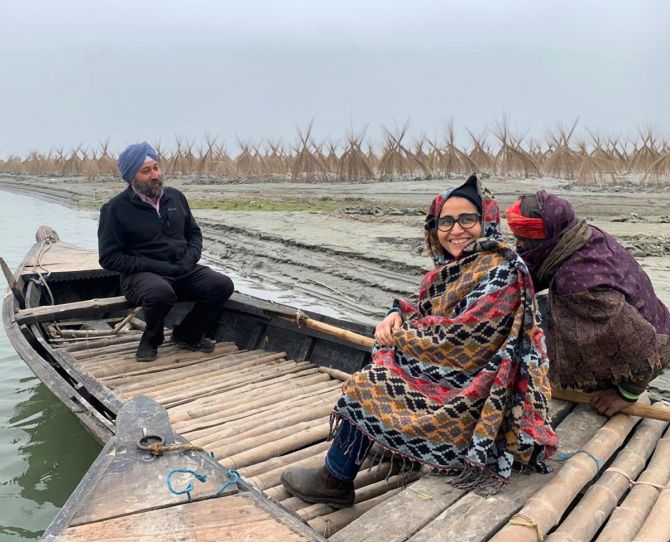
As his career flourished in Hong Kong, he would commute daily for two-and-a -half hours to and fro from his office. He used the bus rides to read Dr Sahib Singh's 10-volume translation of the Guru Granth Sahib twice over.
While he continued to climb the corporate ladder, his readings nudged him in a different direction. It aroused his interest in other faiths and philosophical traditions.
Finally, in 2014, he took a golden handshake and quit American Express in Singapore, where he had worked for over two decades in a career that spanned 25 years.
With his wife Vininder by his side, he plunged into his new calling. "I was on a maniacal pursuit of documentation: Gurbani, scriptures, history of a community, lost heritage..." he says.
A series of 'divine interventions' helped Singh to overcome each hurdle.
He fulfilled his deep desire to visit Pakistan and go beyond the three popularly visited gurdwaras -- Nankana Saheb, Panja Saheb and Kartarpur Saheb.
He wasn't going as a pilgrim, but as an explorer to unearth lost treasures; a long-forgotten heritage in a bygone era of oneness.There was a glowing light at the end of each deep dark tunnel he walked.
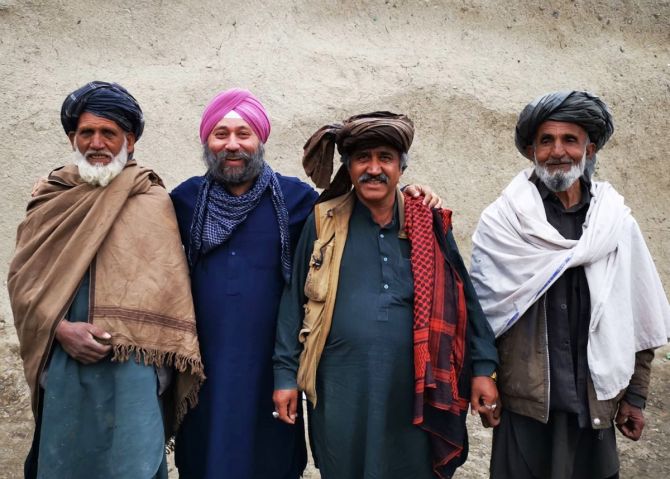
Despite the distrust between India and Pakistan and his obstacle-ridden path, Singh eventually got a 30-day open-ended visa.
His journey in search of a lost legacy began.
"I feel it is your commitment towards your own pursuits that the universe is looking for before it starts opening doors," says Singh, who visited 36 cities and villages in his 30-day first trip to Pakistan.
One person led him to another and he received love and hospitality from his brothers and sisters across faiths. He returned with 7,000 photographs and hundreds of stories.
There were still more challenges in his path. He received a series of rejections in his search for a publisher.
He brushed aside doubts about his decision to quit the corporate world and the financial security of his two daughters who are now in Canada. Finally, things magically fell into place.
His book, Lost Heritage: The Sikh Legacy In Pakistan was followed by a second volume -- The Quest Continues, Lost Heritage: The Sikh Legacy in Pakistan -- for which he travelled to 90 cities and villages.
Then, there was a whirlwind tour of over a hundred seminars across the globe.
The frenetic pace was more hectic than his corporate life.
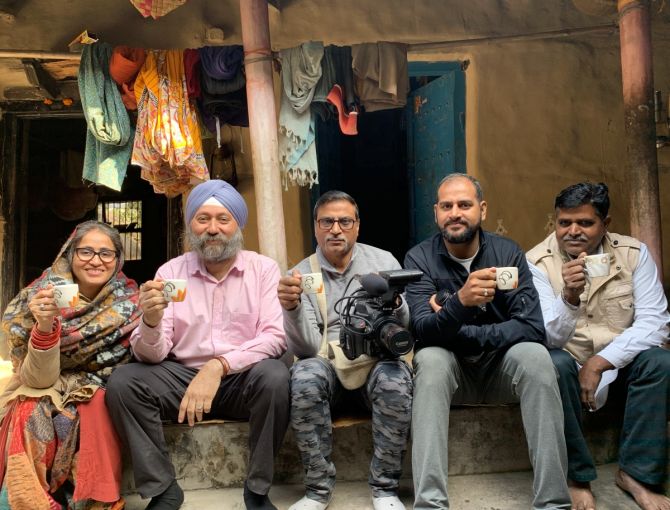
The interest in his work led to two documentaries, Peering Soul and Peering Warriors, after more trips to Pakistan: Khyber Pakhtunkhwa beyond Peshawar, Jamrud, Multan, Muzaffarabad, Hyderabad and Baluchistan.
Acclaim poured in from across the world for his endeavour to focus on a hitherto unexplored realm.
The encouragement and support he received from communities across all faiths culminated in 24 episodes for his docu-series.
When they finished filming across countries and returned to Singapore with 50 gigabytes of data, coronavirus shut down the world!
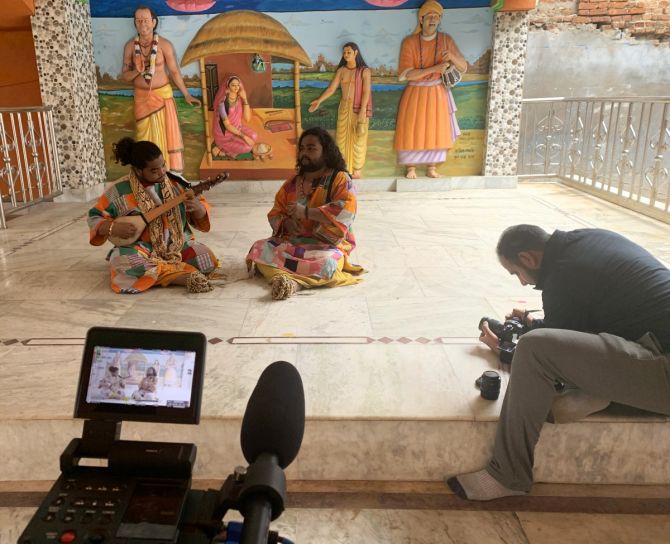
The majority of the areas Guru Nanak traversed fell in geographies where filming is a challenge.
For Singh, the uncertainty and trepidation of filming in a lawless land were interspersed with heart-warming moments.
In Iran, he and his team hired a cab. The driver spoke a smattering of English. Fearful of being reported to the agencies, Singh tried to be discreet about the fact that they were filming.
But by the second day, the ice had broken; the cab driver understood their mission and a bond developed.
When they were outside Teheran heading towards Azerbaijan, he feared the worst. The cab stopped near a mosque. It was not the cab driver's namaaz time.
The cab driver softly said, 'I want to go inside the mosque and pray for your success.'
It was a deeply touching moment for Singh and his team who believe it was the cab driver's prayers that got them unscathed out of the country.
Moments like these were a tribute to Guru Nanak's message of universal brotherhood.
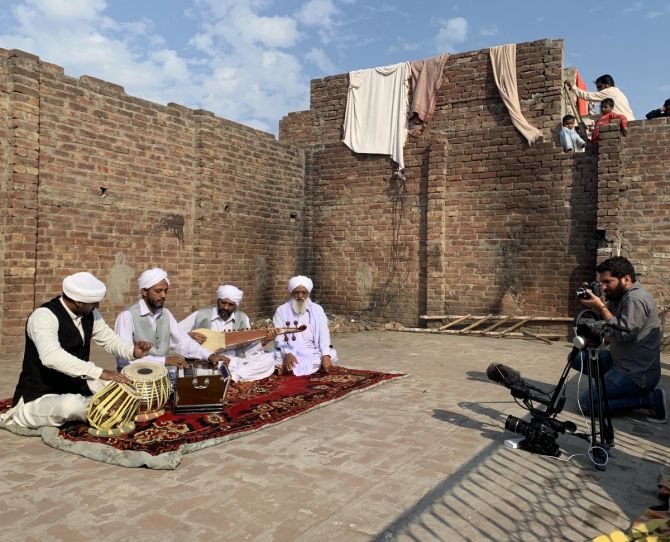
On another occasion, the Singhs and their team were in Ghazni, Afghanistan.
On the outskirts of the town, in a secluded area, stands the Gurdwara Kotla. Singh needed to use a drone to get a panoramic bird's-eye view.
Suddenly his cameraperson, Salman, who is from Pakistan, noticed two vehicles coming towards them. Singh directed Salman to retrieve the drone immediately; they decided to pack up and move.
But, by the time the drone landed, so did the vehicles which were following it. Six men armed with AK-47s walked ominously towards them.
It was a moment of numbing tension.
With no knowledge of Pashto or Dari, the two languages widely spoken in Afghanistan, Singh was unable to communicate.
His local escort stepped forward to talk to the men. As Singh waited with bated breath, their menacing expressions made way for smiles.
The men walked up to them and jovially asked, 'Should we serve you guns and bullets?' almost as though tea and biscuits were on offer. The team had a good laugh and continued their journey.
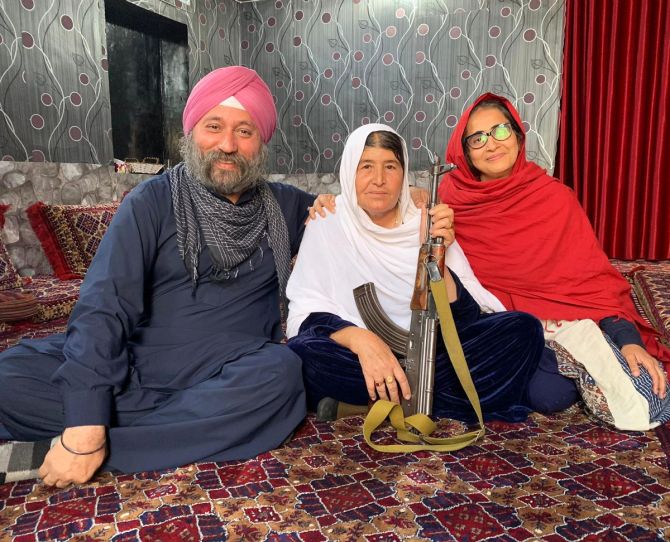
Singh and Vininder also treasure their memories of Khaleda Begum who they met in Khost, a small city near the Afghanistan-Pakistan border.
The team was visiting a locality called Prem Nagar where Hindus and Sikhs once lived. The gurdwaras there had been shelled. The area was desolate.
With his Sikh turban, Singh could not escape getting noticed but he never compromised on his identity.
With an AK-47 slung on her shoulder, Khaleda Begum came running towards them with an intimidating expression.
Singh gently explained what they had set out to do. Her face softened. She assigned her 17-year-old grandson to take her AK-47 and protect the team.
She seemed to embody Guru Nanak's message: Eiko dharam dhrirey sach koi (Righteousness is the only truthful universal law).
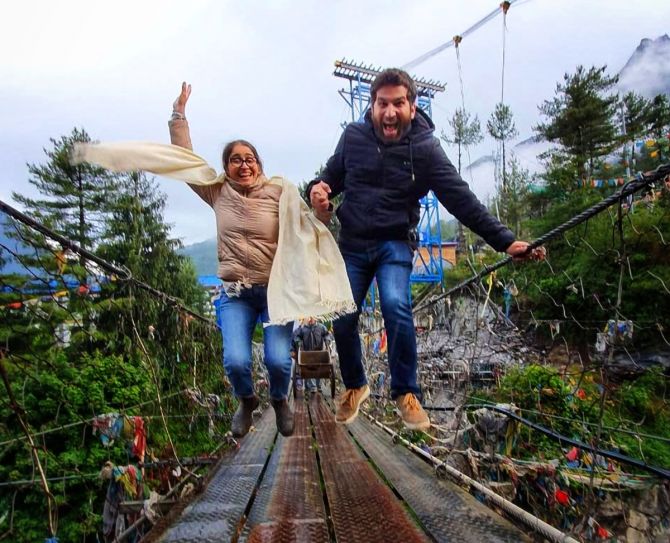
After they finished filming, she invited them home for lunch and, as per their request, cooked a vegetarian meal.
Singh was taken aback when, after escorting them back to their vehicle, she gave him 1,000 Afghanis.
Understanding his look of surprise, she told his local escort in Dari, "Tell him that when he goes to Kabul, he must buy a pair of socks for himself because his have holes. The poor guy, look at his unkempt beard. This is my humble gift to him."
Singh was overwhelmed. It was, he explains, a moment that strengthened his firm belief, "As you emanate, so you attract. I faced challenges but if you exude the right energy, you will attract the right kind of people and you will attract co-operation."
Vininder adds, "You go to places like Afghanistan and Pakistan with a certain mindset. But when you meet the people there, you feel, 'My God, they are beautiful. Everybody is so nice. Their circumstances have made them what they are but they are good human beings'."
"In Afghanistan, we may have encountered a few situations which were life-threatening, but, other than that, they embraced us. It has broken all the barriers in my head."
The couple's greatest reward will be if their exhaustive explorations retracing the steps of the founder of their faith can spiritually stir the viewer, arouse a collective consciousness and remind the world of the teachings of Guru Nanak.
In today's world fractured by intolerance and hatred, we need, more than ever before, to believe in universal brotherhood and compassion.
Feature Presentation: Rajesh Alva/Rediff.com









